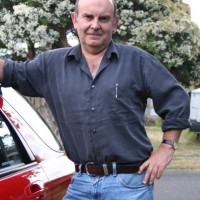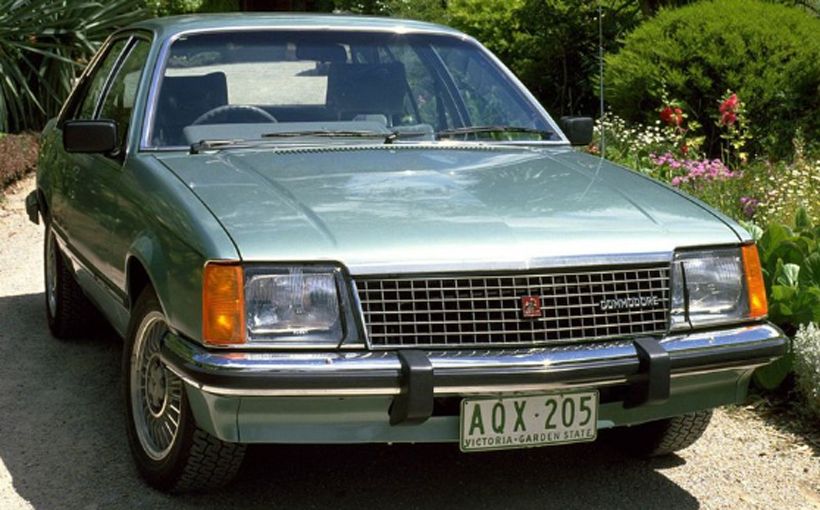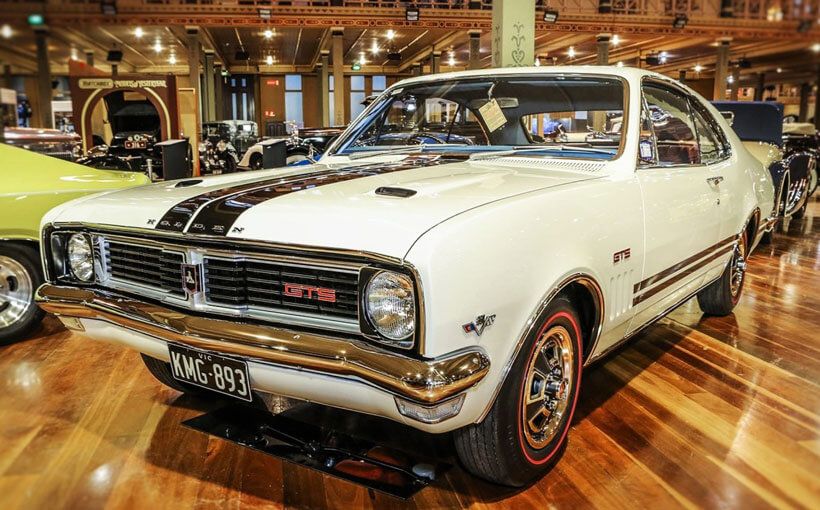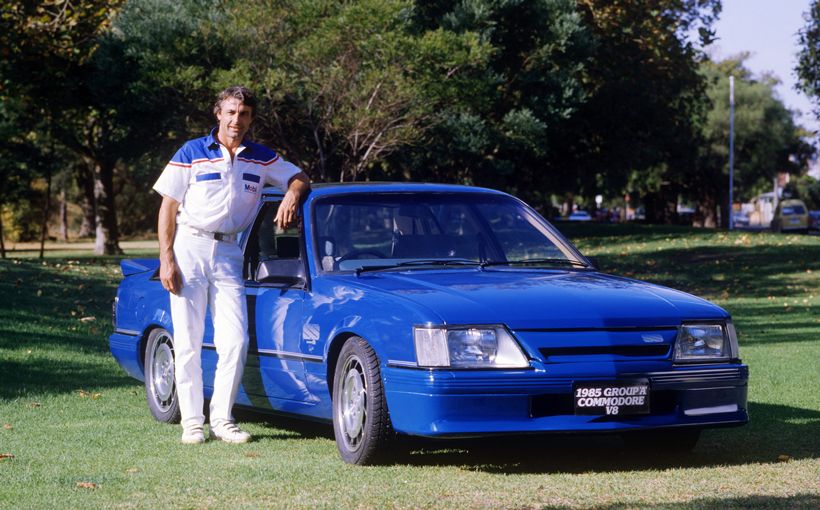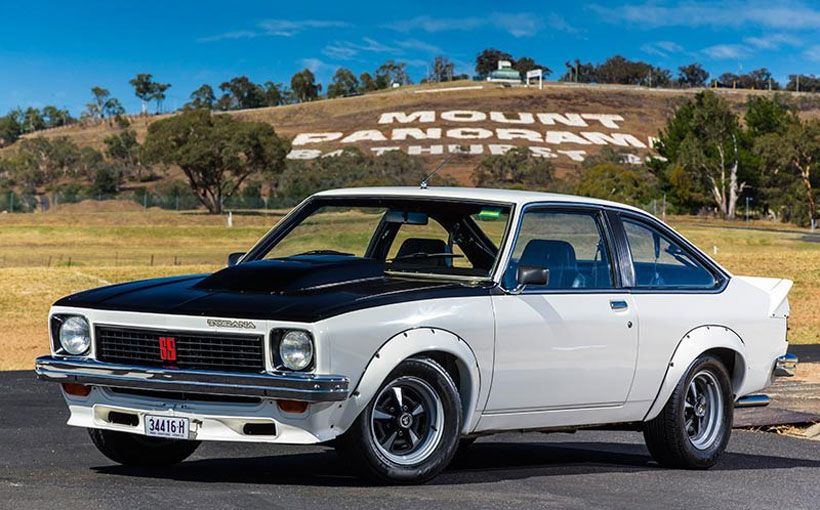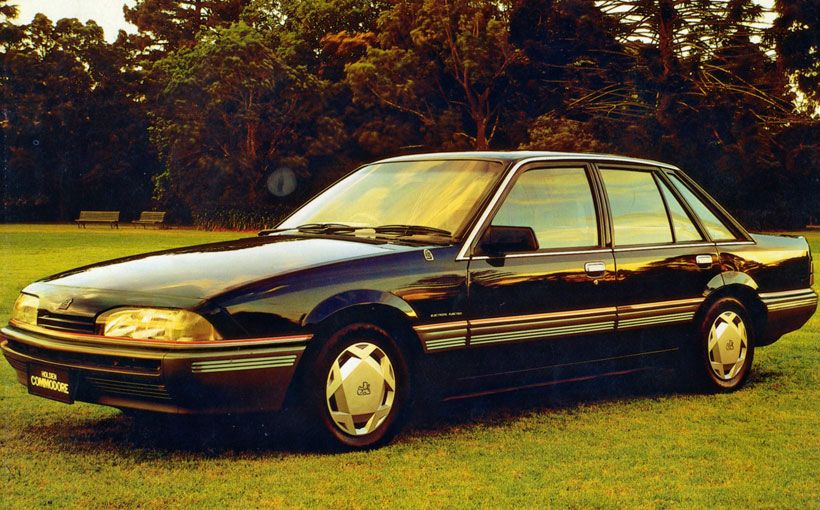
“Bags, you must be a bloody genius to sell that sh**. And we’re going to do something about it.” The car was the LH Torana SL/R 5000. The location was BP corner at Holden’s Lang Lang Proving Ground, the replica of a corner near BP’s storage tanks close to Holden’s head office at Fishermens Bend. The occasion was a spectacular lose after the SL/R 5000 ploughed straight ahead, pretty much as it was engineered to do. The driver was Alex Cunningham, GM’s Director of International Operations and Bags was Holden’s marketing guru John Bagshaw.
The LH Torana was to be the last all-Australian Holden ever. It almost was, until the VE Commodore unexpectedly changed all that in 2006. Until then, the LH Torana was Australia’s second and last chance after the HQ Holden of 1971 to showcase local capabilities from design brief to showroom. Instead, it highlighted everything wrong within the GM world, then and now. The LH Torana, as first presented, would make a perfect case study on why the US industry, and its hapless outposts, remain so vulnerable to global competition and financial collapse.
The Torana was also a victim of the paternalistic “we know what’s best for you” attitude amongst the Americans sent here.
The LH’s biggest achievement in the longer term was a Holden restructuring that allowed Australians and visiting offshore staff to work together as a team in a horizontal and co-operative structure away from the gaze of Detroit. Until the GFC in 2008, Holden was quarantined from the Detroit model of isolated and vertical structures that encouraged ceremony over merit while the bean counters provided direction and determined the outcome.
The LH’s more immediate legacy under this new structure was to sire the LX Torana A9X, a model now widely regarded as Australia’s greatest car after the handling, braking, design and marketing people could finally work together.
Wheels Editor, Peter Robinson, clearly recalls what Cunningham was invited to drive “it was a Torana SL/R 5000, manual four-speed gearbox, manual steering and bias-ply rubber. Not a pleasant combination and much criticised by Wheels at the time”. Even Wheels in its July 1974 road test was spared from driving this combination as offered to the public.
Holden’s Sydney press office was only too aware of the gap between Australian expectations and the entrenched attitudes of key US staff at Fishermans Bend. They had become expert in supplying press cars that explored the outer limits of the options list in tyre and suspension upgrades. For the July 1974 road test, the Wheels test SL/R 5000 was fitted with a set of Globe Bathurst five spoke alloy wheels and Goodyear Grand Rally radials, both a world away from the SL/R 5000’s sad and skinny 13 inch steel wheels with their plastic wheel covers and standard radials. Even then, no one at Wheels was fooled.
So how could a potential benchmark like the LH Torana SL/R 5000 that looked so awesome on paper be ruined beyond recognition by the time it reached the buyer?

The First All-Aussie Torana
Two myths require challenging. The Ford Territory was not the first all new, all-Australian second vehicle line to be produced by an Australian company as claimed at its release. Nor was the LH a cut and shut HQ Holden as so many inside and outside the industry still believe. As a totally new design, the LH was Australia’s first supplementary vehicle range to be built by a local company from scratch. It owed much less to the HQ than the Territory owed to the Falcon when nothing apart from drivetrains were related.
Although the LH initially used existing powertrains, it later prompted the Starfire four cylinder engine, developed specifically for the Torana. And sadly, this was another cynical offering that couldn’t meet expectations.
Despite Holden’s best efforts to make the LH Torana better in every way than the stretched version of the 1966 Vauxhall HB Viva that it replaced, it ultimately sent Torana sales into a tail spin. The timing of this demise and the progressive recovery later verify what went wrong.
Because the SL/R 5000 amplified LH shortfalls, it struggled to sell more than 2580 for the two years it was available. Despite the XB Falcon GT’s extra cost, extra thirst, and crippling insurance costs capped by yesterday’s image on and off the race track, it sold 2899 over the same period.

The LH Brief
Holden’s move to stretch Vauxhall’s obsolete Corolla-sized HB Viva beyond the windscreen to house the six cylinder engines from Holden’s full-sized models seemed both bold and bizarre at the time. Yet it was greeted by Australians of all ages and both genders with huge enthusiasm who still wanted a Holden but not as big or heavy as the Kingswood.
Coinciding with a rush of baby boomers on the roads, the resulting LC/LJ Torana sixes were hugely successful in the showroom and motor sport. Despite Holden’s extra durability, clever styling and class-leading six cylinder performance, the Torana’s budget Vauxhall origins made it too easy for rivals to close the gap.
The bottom line was that Holden by 1974 was pitching the 1966 Viva’s small sub-1.3-litre cabin with its poverty hardware and crude ventilation system against a growing list of capable 1.6 to 2.0-litre models that started life as bigger cars from day one. The packaging and widespread acceptance of the new generation Toyota Corona 2-litre and Datsun 180B sent shockwaves through the local industry.
Because any LJ Torana replacement would again require extra wheelbase allocated to the engine room to maintain the same chassis balance for the four, six and V8 models as well as boost cabin legroom to match the next generation Japanese cars, Holden specified an LH wheelbase of at least 104ins/2642mm. Holden’s stated aim during and after the LH launch was to deliver a modern day 1963-65 Holden EH. One of the most popular Holdens of all time with 256,959 sales, the EH was built on a 105in/2667mm with minimal overhangs front and rear.
By capping LH length to its compact Japanese four cylinder rivals despite such a long wheelbase and boosting width by 104mm, Holden intended to offer class-leading cabin room, short overhangs for rough Aussie roads and consistent chassis balance. Perfect for both the four cylinder family sedan market and its new role as a born-again EH with six and V8 options!

Detroit thinking killed this blueprint before development started. The Americans classified models according to wheelbase, then added front and rear overhang for extra presence. Local packaging and market requirements were secondary. The HK-HT-HG Brougham with its ungainly extended boot was a graphic example of the Detroit approach.
Holden management knew if they presented a Torana business case based on the 104in wheelbase, they would be forced to adapt either the German Opel Rekord or British Vauxhall Victor, cars specifically developed for the half-size bigger European family car segment. The Japanese invasion was already underway in Australia during the LH planning phase. The in-between Toyota Corona 1600/ Datsun 1600/Mazda Capella/Mitsubishi Galant sedans were already credible alternatives yet there was nothing in the GM world to counter their imminent and more competitive replacements.
After stretching the old HB Viva to match these models, Holden engineers knew they wouldn’t get away with adapting an offshore model again. It was an instinct that proved chillingly accurate. When Holden was later locked into spending up to three times the development cost of a new local model on “correcting” the 1977 Opel Rekord for local consumption as the Commodore, Holden took until the mid-1990s to recover from the black hole that it created in company finances and model line-up.
Holden executives therefore pegged the LH wheelbase back to 101in/2565mm so Detroit would allow it to proceed as an all-Australian car. During development, this could be cribbed out to 101.8in/2586mm compared to 2540mm for the LC/LJ.
Because it made no sense to create a second body for the LH Torana 4, it could never win any showroom cabin room comparisons once enough wheelbase was allocated ahead of the front doors to accommodate Holden’s full range of duty-free in-line sixes and V8s. The four cylinder Opel engine was not only off the pace, it cost extra to import. Sales of Holden’s local engines were vital to contain costs across the range.

The figures highlight the Detroit approach. After LH length was increased by 107mm over the LJ, legroom could only be boosted by 18mm in the front and 41mm in the rear. Much of that was lost after proper family car seating replaced the basic chairs that carried over from the HB Viva. Although the LH’s bootline was spared the excesses of the HK-HT-HG Brougham, there were hints of that model in the LH’s rear quarters.
The LH could never match the exquisite long wheelbase/short overhang proportions of the popular full-sized HQ Holden despite the fresh styling. The difference between the HK-HT-HG and the HQ highlighted the impact of this change. Because the HK panels were originally designed for the much shorter HR wheelbase, it retained the longer overhangs to create the impression of extra size.
This explains why the 1968-71 full-size Holdens always looked a little saggy even after the last minute boost in wheelbase to match the XR Falcon’s 111inches/2819mm, the new Detroit benchmark. The HQ was designed from the outset for this wheelbase, containing most of its extra length inside the wheelbase, a process denied for the LH.
As a four cylinder contender, the LH was a failure and there was little that Holden could do about that in the short term. Australians were quick to work out that the boat anchor Opel 1.9-litre four, the extra weight generated by a structure built for a V8 and average cabin room equalled “dog”. After big money was spent on developing an integrated air-conditioning unit compatible with the Opel four, just 13 were sold! Another classic result for the GM vertical pillar approach that didn’t talk to each other!
If there was any consolation for Holden engineers, their local Ford, Chrysler and Leyland counterparts were left to shoehorn their in-line sixes into the four cylinder engine rooms of the Cortina, Centura and Marina ahead of the front axle line for even worse outcomes. Both the Marina and Centura sixes hastened the exit of Leyland and Chrysler from Australia. The LH Torana in V8 form at least evolved into a critical image booster for the entire Holden range.
At the end of the day, the LH Torana defined by Detroit thinking opened up an eight year fissure for the Japanese to take control of the local four cylinder market virtually unopposed between 1974 and 1982.

LH Engineering
Behaviour of certain visiting US staff during LH development beggars belief and would almost certainly expose Holden to punitive action in today’s context. What has emerged over the last 40 years as more Holden insiders have felt free to talk about this period, is a disturbing litany of confrontation and intimidation by a high-ranking visiting US engineer.
Too often this behavior would appear in full view of other management and staff, anywhere from the canteen to work areas. It was highly effective in silencing dissent and dispersing skilled Holden personnel. Holden had the local skills to implement the geometry and chassis tuning of Holden’s Radial Tuned Suspension almost a decade before its 1976 arrival. Australia had been producing textile-belted radial-ply tyres from around 1964.
By 1974, the local tyre range had been extended to a wide choice of high quality 70 series radial tyres and the Uniroyal 180 Steel Cat steel-belted radials. Even non-enthusiast owners appreciated their benefits, especially for Australian distances and speeds. Holden’s domination in competition during this period could not have occurred without radial tyres.
This US engineer’s appointment ensured that the parallel suspension and chassis work undertaken by Holden engineers for the production cars, along with what HDT was discovering, would never see the light of day until 1976. By that time the handling, braking and steering of the entire Holden range had been discredited. Although better than the HQ, the LH Torana attracted a younger and more aware demographic who soon discovered they were being short-changed.
During the period from 1969 to 1975, the effect on the product was so profound that Holden in some quarters never fully recovered from the loss of trust and integrity during this period. This was despite the extensive and immediate rearguard action that followed Alex Cunningham’s visit and his comments to Bagshaw.
That no one within Holden could nip it in the bud highlights the flaw in the US vertical management structure - keeping the money men happy appeared to ensure an unhealthy degree of tolerance. Holden was not alone as another visiting US manager had a similar wrecking ball effect within Chrysler Australia during the same period except Chrysler didn’t have an Alex Cunningham to raise the alarm while there was still enough left to salvage.

LH body engineering was undertaken by Reg Hall. As one of his last projects before retirement, he set out to build his strongest and safest structure yet. Factor in the increase in size, the comprehensive anti-corrosion package, integrated ventilation system and the benchmark durability over the worst roads, the LH’s 82kg weight increase was not excessive. For a structure of its size to handle everything from an insipid four to almost full-house Formula 5000 V8 engines off the shelf was a huge achievement.
From there it went downhill. Although rear axle location and suspension travel was improved beyond belief and the LJ’s double wishbone front cross-member with rack and pinion steering was re-developed for the LH, the isolationist US philosophy then dictated how this would reach the buyer. Alex Cunningham’s blunt assessment of the end product bordered on understatement.
Young Holden engineers explained the philosophy they were working under: “If you set up a car to scare the driver into slowing down long before it reached the limit of its chassis, you could specify drum brakes where there should be discs and fit skinny cross-plies on narrow steel rims where there should be radials supported by bigger and stronger rims and suspension parts. By then, you don’t have to worry too much about tuning suspension bushes, spring rates, damper capacity and anti-roll bars. It then kept you sweet with the bean counters as it cut costs all the way down the line.”
If a US engineer was able to implement such a philosophy without sanction and had no commitment to the performance versions or the marketing benefits of racing, why would the SL/R 5000 be any exception? This explains why it also didn’t have the four wheel disc brakes made locally for Ford since 1973, decent halogen headlights to match its extra performance as fitted to later Holdens, or the Salisbury rear axle already in the Holden inventory for the One-Tonner.
Although BR70H 13 radials were fitted to the SL/R 5000, they were barely wide enough for the power and were an afterthought. Most LH models came with cross-plies so the suspension was just not engineered for the SL/R 5000’s extra grip. Radials seemed to highlight the LH’s excessive understeer and unwillingness to change direction then exposed the lack of body control and excessive weight transfer under cornering and braking. They also could do little to compensate for the almost total removal of steering feel. As a combination, it is not surprising that Alex Cunningham had no chance during his evaluation drive at Lang Lang.
At the time, Australia was undergoing a huge catch-up in infrastructure which prompted thousands of drivers, young and old, to travel long distances to service the mining, road construction, telecommunications, energy, farming and forestry industries by road. The Bagshaw “genius” as noted by Alex Cunningham was Holden’s success in establishing the LH Torana V8 and its driver Peter Brock as icons for this group which appeared to validate the LH Torana SL/R 4.2 or 5000 as perfect for this application. This writer was one of them and couldn’t believe the huge disconnect in almost every area when it was time to upgrade to an LH SL/R 5000.
Road fatality stats show that single vehicle crashes involving lone male drivers who failed to take a bend then hit something solid like a tree were excessive during this period. Detroit’s own Alex Cunningham could easily have been one of them if his “off” hadn’t occurred within Lang Lang.

LH Styling
There can be little doubt that the SL/R 5000’s slick styling backed by its later track performances kept the entire LH Torana range visible at a time when its mechanicals were showing their age and its poor dynamics were exposed.
Leo Pruneau penned the LH over two tours of duty in Australia, the second after he came back as design chief. The first time was just after he had completed the all new Vauxhall FE Victor range. He has since acknowledged that the family resemblance between the two models in the flesh ended up closer than he expected. He had also been working for Opel during this period which explains why the LH shape was so compatible with the Opel Kadett-based T-car Gemini that arrived soon after.
Detroit’s GM small car at the time was the Chevrolet Vega. It had quite an influence over the LH Torana in more ways than one. The Vega reflected Bill Mitchell’s current corporate styling direction which placed the front bumper running across deeper European-style grilles.
Although this theme worked well with the slender bumpers on the Vauxhall Victor, the new deep girder-style bumpers that Holden was introducing with the LH and the HJ full-size range hid the lower section of the LH grille. Because Holden anticipated that Australia would follow the US with some sort of impact bumper requirement, the LH and HJ bumper design was the first step in such a transition. The bumpers also had to be much stronger for Holden’s new bumper-mounted jacking system.
Because there was no point running a full-depth LH grille behind these big new bumpers, body engineer Reg Hall came up with the idea of running a trim piece under the LH bumper to create the impression that it was still there.
During the initial design phase, a two-door booted LH sedan was developed which didn’t make much sense with the increase in size nor could it pass as a coupe like the LJ two-door sedan. After John Bagshaw saw the Vega two-door hatchback in the US, development of the two-door sedan stopped so it could be re-developed as a Hatchback.

Because the initial proposals for the LH Torana Hatchback were compromised by a straight rear lid that made the tail look too pointy, the model was delayed until the engineers could develop a kink at the base of the hatch panel. For its time, the LX Hatchback was quite a tooling achievement as its rear hatch door had to mate up with the body on so many different levels but it was not completed in time for the LH.
The LH was the first Holden with rectangular headlights, a big shift. After Leo Pruneau had designed the HB Viva with rectangular lights, Holden swapped them for cheaper round lights in the HB Torana to save costs, ruining the proportions of the Viva front. Although attempts to put them back in the LJ failed, he was able to get a local rectangular headlight approved for the LH as a point of difference over the quad headlights on Japanese rivals as well as the TC Cortina and Centura. Ironically, it was Chrysler volumes for the VG-VH Valiant and later Hillman Hunter that had made the LH’s local rectangular headlight viable.
Although these headlights contributed to the LH Torana’s fresh stand-apart Euro look, the Torana fours missed out. They were also not good enough for the SL/R 5000. Chrysler supplemented these headlights with driving lights on performance Chargers and Ford had added driving lights to the GT since 1968. Holden was the only company not to improve the headlights on its performance models during this era. That wouldn’t change in time for the LH.
Last but not least were SL/R 5000’s body additions. Leo Pruneau was always impressed by what Pontiac was doing so the rear spoiler design was inspired by an aggressive early 1970s Firebird addition. The inward curve of the trailing face was unique to the Torana as was the boot key access through the spoiler, a feature introduced with the first XU-1.
The SL/R 5000 front spoiler was completed on Pruneau’s return appointment and was an evolution of the front spoilers on his various HQ show cars including Old Man Emu. Even this wasn’t without its problems after it was discovered just prior to production that the LH front indicators were mounted too low for local registration requirements following a mix-up in laden and unladen ride heights. They were quickly and easily raised for production cars but not before the first SL/R 5000 front spoilers were produced for the lower indicator height, leaving a gap underneath each front indicator.

The SL/R 5000 Cabin
The LH dash was reduced to little more than a buckboard with interchangeable holes for instruments on one side and a glove box aperture on the other. A more inviting cockpit-style dash, similar to the UC Torana upgrade, was abandoned under vague plans to export the LH Torana in LHD.
Holden’s Production team later discovered it was easier and cheaper to produce the centre dash section with the instrument panel attached on one side or the other. The bland flat dash panel was all for nothing.
Compared to the compromises imposed on local LH Torana sales against the more lavish dash designs of rivals, LHD export numbers were close to negligible. Proposals to add more instruments to the SL/R 5000 were rejected. Again, the vertical pillar management structure not only left the final result uncompetitive in another vital area but cost Holden extra money when it had to be replaced.
Summary
To highlight exactly what this collective turmoil cost Holden and the wider Australian community in terms of handing the market to imports, the Torana four cylinder figures paint a compelling picture.
Because the LH Torana 4 engine on its own was never good enough to compensate for these shortfalls, the sales impact of each shortfall can be isolated and quantified. When the LH Torana 4 was at its freshest and newest, its annual sales struggled at 6,500 in 1974.
To close off any possibility that the fours were not benefitting from the SL/R 5000’s halo effect, Holden launched the Plus Four just before Bathurst 1975 with front disc brakes, SL/R detailing including wheel covers, and bold stripes. Despite a big price cut for the 1000 examples, sales still plummeted to 5,500 for 1975. Holden was more successful in insulting Australia’s Morgan faithful, several of whom were senior Holden staff, by applying Morgan’s Plus Four badge to such a model.
What happened next proved that Australians could not be sold a dog even with quasi-pedigree papers! After Holden added RTS in 1976, four cylinder sales immediately climbed to 7,900 and 11,500 in 1977 despite the addition of power-sapping emissions equipment. A new dash for the UC facelift saw four-cylinder sales rocket to 15,800 in 1978 at a point when it was facing unprecedented opposition and starting to show its age.
Extrapolating this data and factoring in what might have been had the wheelbase and cabin continued as planned, it is almost certain that Holden’s defective internal processes halved sales of this Torana series despite the best efforts of HDT on the race track. If the same process continued unchecked in Detroit, it would be no surprise to Holden veterans that GM hit a wall in 2008.
References: Heart of the Lion by John Wright, Torana Tough by Norm Darwin.


